When should I stop working on my startup idea?
When investment > expected value
Annie Duke (opens in a new tab), former professional poker player and author of Thinking in Bets explains how she confidently made decisions — when it's looking like you'll get less than you put in.
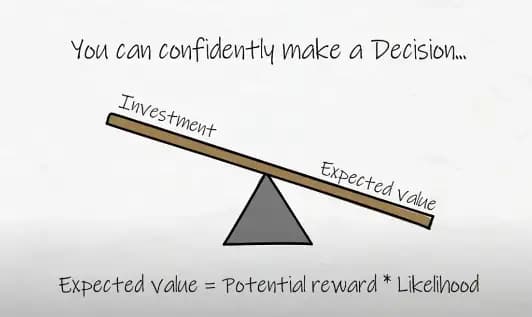
Animation from Productivity Game (opens in a new tab) on YouTube
Taking Annie's words to heart, In this article, I'll share the questions I asked myself to validate Palate's likelihood of success. I'll share;
- The industry problems I worked on
- The risks associated with the product
- Why I'm happy with the time I spent
Is my product solving a market problem?
42% of failed startups attributed No Market Need as the reason for failure — simply, these startups aren't solving meaningful problems.
CB Insights, link here (opens in a new tab)
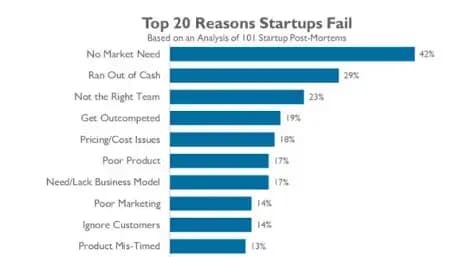
Do I have a problem to solve?
I validated this by first finding problems within the industry, then identifying the value propositions of current successful solutions, and lastly hypothesis testing on the problem space. If there wasn't a “felt need”, I moved on to the next problem.
Problems are problems only when there is a “felt need” that motivates people to search for a solution in order to eliminate discrepancies — David Jonassen, Learning to solve complex scientific problems
I used the Problem Roadmap to hard-line my thoughts to continue focusing on customer problems, not the initial idea I believed would work. I wrote about this and how I used it in a previous post (opens in a new tab).
The only difficulty I found using the problem roadmap arose when friends asked me what I was building. The answer, to most, demonstrated uncertainty, a lack of confidence, and perhaps to me, a slightly bruised ego — “I don't know yet”. I'm grateful to have followed the problem space which gave me the insight to move on to something else.
How valuable are those problems?
After validating problems and speaking with customers, I researched why alternate solutions in the industry were valuable, what pain they solved, what gains they offered the customer, and what features/functions they needed to be successful.
I used the Value Proposition Roadmap, a tabulated version of the Value Proposition Canvas completed on many different companies which helped me analyse themes in the industry and importantly, where the industry has come from and where it's going — a sample can be found on Palate.so (opens in a new tab).
Am I the right person to solve them?
The research presented 4 main themes — increasing d2c sales, selling to a different demographic, increasing the perceived value of wine, and creating a community. I could then validate whether these represented industry problems and dig into whether their problems are worth solving. I wrote about why I don't think I'm in the position to solve them on the home page Palate.so (opens in a new tab).
What risks did we consider?
Risks are Under-Appreciated and Under-Estimated; Marty Cagan calls out the 4 big risks (opens in a new tab) products need to validate before pursuing further. Below, I'll focus on the first 2; if I can't de-risk value and usability, I shouldn't move further.
Value Risk
Customer/User interviews, Reddit and Wine forum posting, and interviewing wine-focused friends gleaned light on the facts, not the rose-colour glasses founders sometimes wear. The result was existing solutions were working fine; even if manual, a new tool wouldn't create significant value in the market, especially new Blockchain for X tools (opens in a new tab).
Authenticity and Provenance, 2 key differentiators blockchain provides didn't interest the wine collectors I spoke to. The majority purchase wine from their trusted distributors and don't worry about Authenticity and Provenance.
Usability Risk
Can users work out how to use it? Many folks in Web3 are looking to solve the problem, bringing Web 3 to the masses; Yao Ming's Winery released an NFT Wine collection (opens in a new tab) using a friendly interface tool for Blockchain called GFT™ Exchange, essentially a Web-2 email/password login connected to your account. Not your keys, not your coins; I don't see the need for wine collectors to change what they're doing.
Vintners, Vignerons, and Negociants (Winemaker, Vineyard Grower, Wine Merchants) that I've met are true to their craft. They obsess with what they're good at, whether that's farming, meticulously cleaning their grape presses, or getting barrels ready for ageing. Modern technology like social media marketing and increasing director-to-consumer sales is something many thought of but haven't implemented. Through a few vineyard visits, I found the concept of blockchain foreign to all but 1, ruling usability out for now.
Value Proposition Canvas — the tell-all
Strategyzer's Value Proposition Canvas is a visual tool to see how tightly a company's product services their target markets pains and gains, AKA how good is their Product-Market Fit.
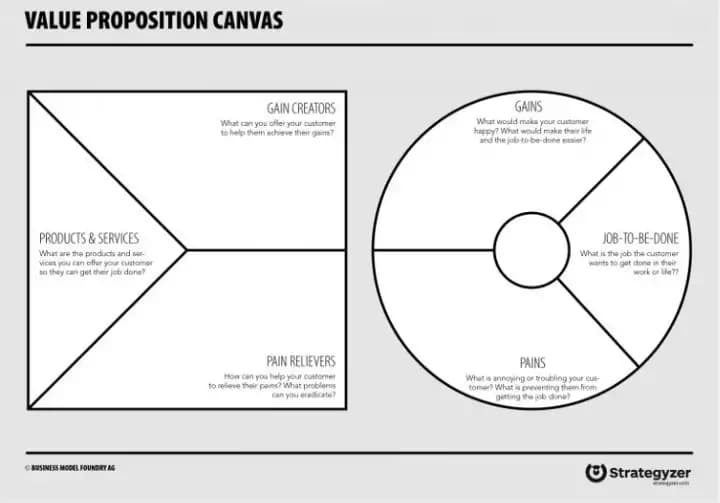
After a few shaky rides, I created a value proposition canvas for a few new features I'd like implemented in UBER
- Surge pricing insurance
- Photographic reviews
- Lowest rating setting
Here's a Value Proposition Canvas with a tight Product-Market Fit; note the more links between Gains & Gain Creators and Pains & Pain Relievers, the stronger value derived from the product.
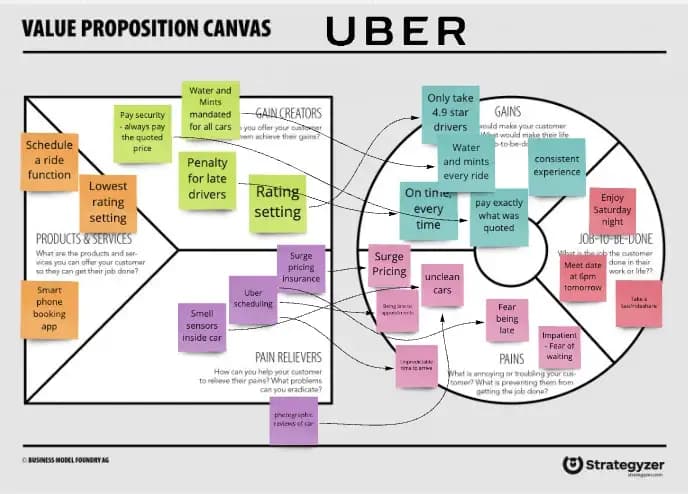
Contrastingly, here are 2 I created for Palate targeting the 2 different personas, the Buyer/Wine collector and the Winemaker/Merchant.
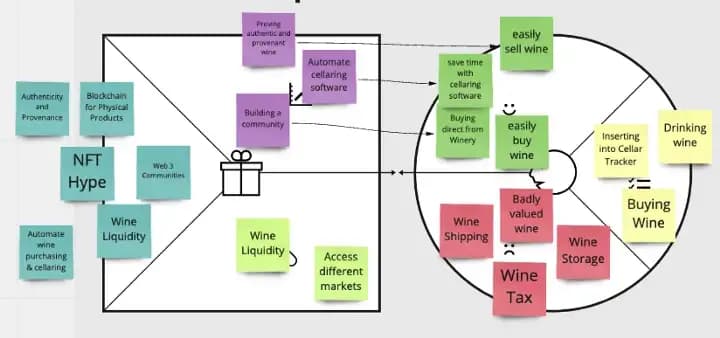
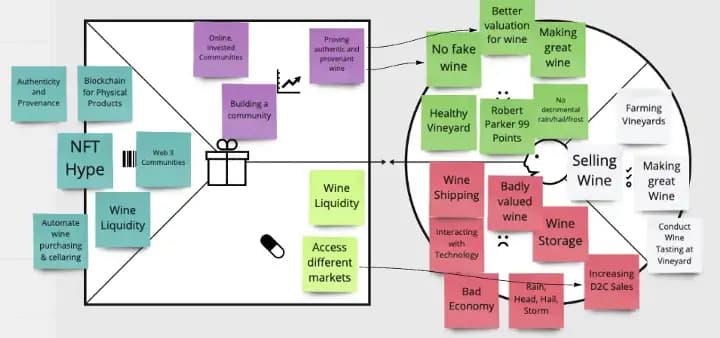
Value Proposition Canvas for Wine Buyer/Collector PersonaValue Proposition Canvas for the Winemaker Persona
Fleshing these out helped clarify my understanding of the value proposition Palate could provide.
Why I didn't waste my time
I'm happy that I:
- Didn't spend time or money on design, trademarking, marketing, coding websites, unneeded networking, no making friendships I wouldn't pursue further otherwise
- Focused on problems and didn't convince myself I had a winning Idea — the Problem Roadmap helped
Things I could improve:
- Validate faster — researching a new industry and understanding where I can add value takes time. In retrospect, I think I spent too much time in discovery before quickly selecting a problem to validate
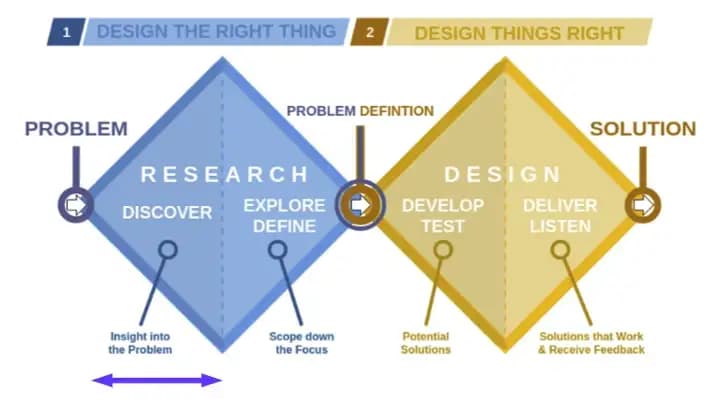
Double Diamond (design process model), first proposed by Béla H. Bánáthy (opens in a new tab), taught to me by Harry Hamilton (opens in a new tab)
- 80/20, focusing on value and not perfect: I wanted to “build in public”- I think I spent more time than needed on making the “build in public” beautiful; I'll cut down my editing and beautifying for my next project
- Emphasising qualitative over quantitative research, the most enriching customer interviews were casual chats with people, meeting for the first time or steering a conversation towards pains in the industry. This is the time for Qualitative interviews, and I think I forgot the heart of problems lies in people with frustrations, and they vent them easily
- Didn't use alternate solutions fast enough. I'm familiar with a few industry tools; after my first interviews, I heard about Cellar Tracker and didn't test it fast enough — it solved most of the problems I had thought of and people were happy with it
Summary
Product Management frameworks were the key to bolstering me to solving meaningful problems. I'm grateful to everyone involved in the project, everyone that gave me valuable time and interviews to shape my understanding to this point.
I'll share an update on what's next soon.